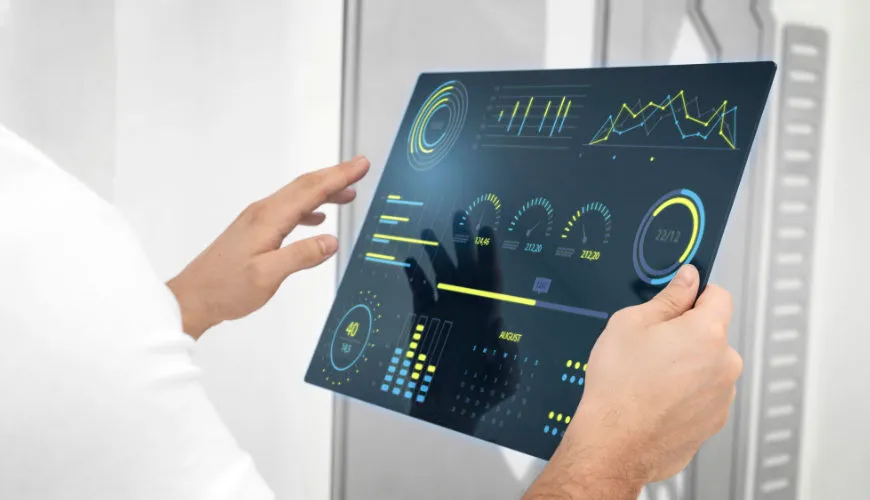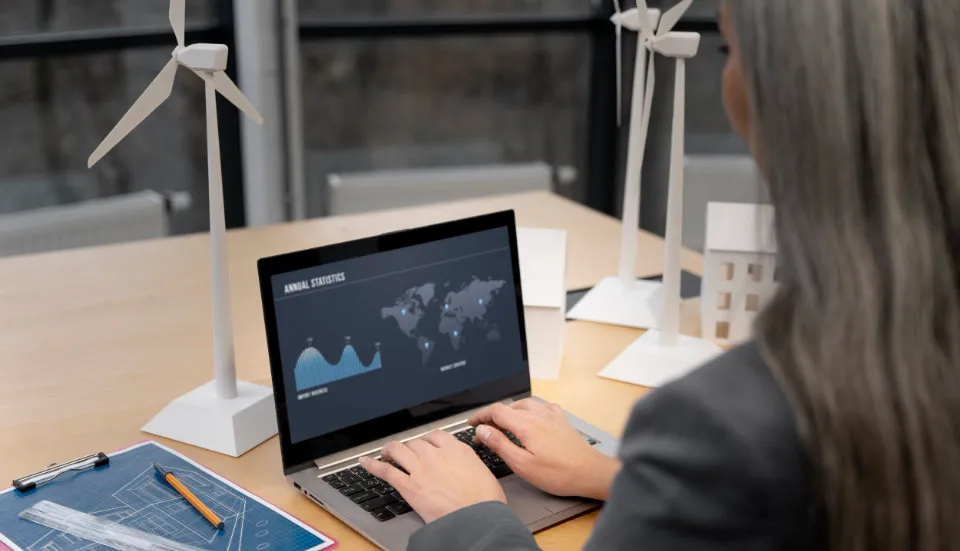
Household Energy Resources Telemetry in the EU

Lukas Vida
8 min
Unlocking Efficiency and Flexibility for a Sustainable Grid
The European Union stands at a pivotal moment in its energy transition. Ambitious goals like climate neutrality by 2050 and the urgent need for energy security, amplified by recent geopolitical tensions, demand a radical transformation of the energy system. Central to this transformation is the prosumer – households that are no longer just passive consumers but active participants, generating electricity (primarily via solar PV), storing it (in home batteries or electric vehicles), and managing demand.
Effectively integrating these distributed household energy resources (HERs) requires unprecedented visibility and control. This is where telemetry – the remote measurement, monitoring, and communication of data – emerges as the indispensable nervous system of the future smart grid. This article explores the critical role, current state, challenges, and future trajectory of household energy resources telemetry within the EU.
Beyond the Meter: Defining Household Energy Resources Telemetry
Traditionally, electricity meters measured only aggregate consumption, typically read manually or via automated meter reading (AMR) periodically. Telemetry for HERs represents a quantum leap:
- Granular Data: Moving beyond total kWh, telemetry captures high-resolution data (often intervals of 15 minutes or less) on electricity consumption and generation (e.g., solar PV output).
- Bidirectional Flow: It monitors both import from the grid and export to the grid.
- Resource-Specific Monitoring: It tracks the state and performance of specific devices: battery state-of-charge (SoC), charging/discharging rates, EV charging status and rate, heat pump operation, etc.
- Remote Control & Automation: Increasingly, telemetry systems enable secure remote control signals, allowing devices to respond to grid needs (e.g., shifting EV charging times, adjusting heat pump operation, discharging batteries) or optimizing for self-consumption and cost based on user preferences.
- Real-time or Near-Real-time Communication: Data flows continuously or frequently between the home and external entities (utilities, aggregators, energy service providers, grid operators).
Why Telemetry is Imperative for the EU
The EU’s energy landscape makes HER telemetry not just beneficial, but essential:
- Integrating Massive Renewables: The EU targets 42.5% renewable energy by 2030, predominantly variable sources like wind and solar. HERs (especially batteries and flexible demand) offer crucial flexibility to balance this intermittency. Telemetry provides the data needed to forecast, aggregate, and dispatch this flexibility effectively.
- Empowering Prosumers: Millions of EU households are installing solar panels. Telemetry enables them to maximize self-consumption, optimize battery usage, participate in energy markets (selling excess power), and access dynamic tariffs, translating investments into tangible savings and revenue.
- Grid Stability & Optimization: As distributed generation grows, local grid constraints (voltage fluctuations, transformer overloads) become more common. Granular telemetry allows Distribution System Operators (DSOs) to monitor low-voltage networks in real-time, predict issues, and proactively manage flows using HER flexibility, deferring costly grid upgrades.
- Enabling Demand Response (DR): Telemetry is the backbone of effective DR programs. It allows aggregators to verify load reductions or shifts initiated by HERs (e.g., pausing EV charging, reducing water heater temperature) and ensures consumers are fairly compensated.
- Energy Efficiency: Detailed consumption data empowers households to identify energy-hungry appliances and change behavior. Telemetry coupled with Home Energy Management Systems (HEMS) automates efficiency measures.
- Compliance & Market Access: EU legislation (e.g., the Clean Energy Package) mandates consumer access to their data and facilitates their participation in markets. Telemetry infrastructure is fundamental to meeting these requirements.
The Technological Enablers
HER telemetry relies on a layered technological stack:
Smart Meters (Advanced Metering Infrastructure - AMI)
The foundation in most EU countries. Modern smart meters (mandated by EU directives) provide bidirectional, interval consumption/generation data and communicate via secure networks (PLC, RF mesh, cellular) to the DSO or utility. While essential, they often lack device-level granularity.
In-Home Devices (IHDs) & Gateways
Display real-time energy data to consumers and often act as local communication hubs.
Sub-meters & Dedicated Sensors
Provide granular data for specific circuits (e.g., EV charger circuit, solar inverter output, battery system) or appliances. Often connect via Zigbee, Z-Wave, Wi-Fi, or Bluetooth.
Home Energy Management Systems (HEMS)
The “brain” of the connected home. HEMS collect data from various sensors and devices (via local networks or cloud APIs), process it, and execute control strategies (e.g., charge battery when solar is abundant, pre-heat home during low-tariff periods). They communicate telemetry data externally and receive control signals.
Communication Protocols
A mix is used:
- Local Area: Wi-Fi, Bluetooth, Zigbee, Z-Wave, KNX, Modbus.
- Wide Area: Cellular (4G/5G NB-IoT, LTE-M), Power Line Communication (PLC), RF mesh, sometimes direct fiber/DSL. Security (encryption, authentication) is paramount.
Cloud Platforms & Data Hubs
Where vast amounts of telemetry data are aggregated, stored, analyzed, and made accessible (under user consent) to authorized third parties (aggregators, DSOs, retailers). EU initiatives like the “Data Space for Smart Energy” aim to standardize and secure this data exchange.
EU Policy: Driving the Telemetry Ecosystem

EU legislation provides a strong framework:
Electricity Market Directive (2019/944) & Regulation (2019/943)
Cornerstones of the Clean Energy Package. Key mandates:
Consumer Data Access
Consumers have the right to access their near-real-time consumption/generation data (at least once per day, ideally per hour or less) and share it with third parties.
Smart Meter Rollout
Sets minimum functional requirements and deployment targets (80% coverage by 2024 where cost-benefit positive).
Dynamic Pricing
Encourages time-varying tariffs, requiring telemetry for implementation.
Aggregation
Enables collective participation of small consumers/prosumers in markets.
Renewable Energy Directive (RED III)
Promotes prosumerism and renewable self-consumption, implicitly requiring enabling technologies like telemetry.
Data Governance
GDPR sets strict rules for personal data handling. The Data Act and proposed Energy Data Delegated Acts aim to clarify data sharing rules for the energy sector, ensuring privacy while enabling innovation.
Cybersecurity (NIS2 Directive)
Imposes security requirements on critical entities, including energy suppliers and DSOs, covering telemetry infrastructure.
Current State Across the EU: A Patchwork Progressing
Telemetry deployment is uneven:
Smart Meters
Rollout is advanced in countries like Italy, Sweden, Finland, Spain, and France. Others (e.g., Germany, Poland) are progressing but lagging in full functionality or penetration. Interoperability remains a challenge.
Device-Level Monitoring
Growing rapidly but largely driven by consumer adoption of HEMS, smart plugs, and vendor-specific ecosystems (e.g., solar inverter + battery systems). Standardization for seamless integration is still evolving.
DSO Uptake
Leading DSOs are piloting and deploying advanced grid monitoring and HER flexibility platforms, leveraging smart meter data and exploring access to device-level data (with consent). Scale varies significantly.
Aggregators & Retailers
Increasingly offering services (optimization, VPP participation) reliant on HER telemetry. Accessing consumer data via standardized processes (e.g., APIs through Data Hubs) is crucial but still maturing.
Challenges and Hurdles
Despite the clear need, significant challenges remain:
- Interoperability & Standards: A fragmented landscape of devices, protocols, and platforms creates friction. Initiatives like the SAREF4ENER ontology and Matter (for local connectivity) are promising but need wider adoption. Seamless data exchange between HEMS, meters, DSOs, and market players is not yet a reality.
- Data Privacy, Security & Consumer Trust: Handling granular energy data raises legitimate privacy concerns (revealing occupancy, appliance usage). Ensuring robust cybersecurity for millions of devices is a massive challenge. Building consumer trust through transparency and control over data sharing is essential.
- Cost & Business Models: Deploying advanced telemetry (beyond basic smart meters) incurs costs. Who pays? (Consumer, DSO, service provider?) Sustainable business models for services leveraging telemetry need further development and market maturity.
- Consumer Engagement & Digital Literacy: Many consumers are unaware of the benefits or overwhelmed by technology. User-friendly interfaces, clear value propositions, and support are needed to drive adoption and active participation.
- Regulatory Uncertainty & Complexity: Evolving data sharing rules, market designs for flexibility, and differing national implementations of EU directives create uncertainty for investors and innovators.
- Grid Integration Complexity: DSOs need tools and processes to handle vast data streams and orchestrate HER flexibility safely and effectively within grid constraints.
The Future Outlook: Towards an Intelligent, Flexible System
The trajectory for HER telemetry in the EU points towards:
- Ubiquitous Granular Monitoring: Device-level monitoring becoming standard for new HER installations (solar, batteries, EVs, heat pumps).
- Advanced HEMS & AI: Smarter HEMS using AI for predictive optimization, personalized automation, and seamless integration into Virtual Power Plants (VPPs).
- Standardized Data Exchange: Mature implementation of Data Spaces and APIs, enabling frictionless, consent-based data sharing across the ecosystem.
- Real-Time Markets & Grid Services: Increased participation of aggregated HERs in wholesale markets, balancing services, and local congestion management, driven by real-time telemetry and control.
- Enhanced DSO Visibility & Control: DSOs actively utilizing HER telemetry for advanced grid management, predictive maintenance, and optimized hosting capacity.
- Consumer-Centric Services: Proliferation of personalized energy services (optimization, trading, efficiency insights) built on telemetry data, offering clear value to households.
Conclusion
Household Energy Resources Telemetry is the critical enabler for the EU’s sustainable, secure, and decentralized energy future. It transforms passive consumers into active, empowered prosumers, unlocks the vast flexibility potential of distributed resources, and provides the granular visibility essential for grid operators to manage increasing complexity and renewables penetration. While challenges related to interoperability, privacy, cost, and regulation persist, the strong EU policy framework and rapid technological innovation are driving significant progress.
As telemetry infrastructure matures and becomes more ubiquitous, granular, and integrated, it will form the digital bedrock upon which a truly intelligent, responsive, and consumer-centric European energy system is built. Investing in robust, standardized, and secure telemetry solutions is not merely an option; it is a fundamental prerequisite for achieving the EU’s ambitious energy and climate goals. The journey towards a smart energy future runs directly through the telemetry systems in European homes.
Let’s Build Future Together.
Get Started Now


